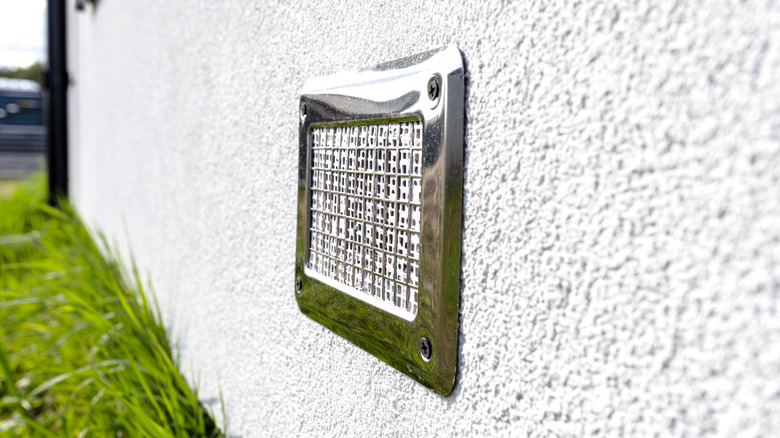What To Know About Your A/c Settings Before Opening Up Your House For Fresh Air
Sometimes the air in your home can start to feel stuffy and stale, especially during that in-between season when your HVAC system is off for long stretches of time. The time-honored solution — popping open a window — can sometimes help, but can also introduce pollution into your home and can leave humidity (and potentially mold) completely uncontrolled. Running your AC in fan-only mode can help, but can also make the problem worse. It all comes down to the capabilities of your air conditioning system, and your access to those capabilities is your thermostat.
A modern thermostat is far more than a mere thermostat. They contain all manner of smarts, from running based on your schedule to adjusting to your preferences. They might have geofencing capabilities, long histories of your habits, and the ability to be controlled from a hotel in Cleveland. But, to solve the stuffiness-on-a-cool-day problem, what you need is a thermostat that can manage ventilation. That is, a thermostat that can basically open a window. If your AC settings include the ability to manage ventilation, you're usually better off letting it, but it's not always a simple matter.
When, and how, to open a window
Your home needs fresh air. The Environmental Protection Agency recommends a median air exchange rate of .45 ACH, meaning almost half of the air in your home should be exchanged with fresh air every hour. This might sound odd: We build homes to stop air from coming in, so how can we expect it to be completely replaced 11-12 times per day? This exchange can happen in a few ways, and one of them is what the EPA calls "natural ventilation" — opening windows and doors. This air exchange is a key to indoor air quality, and indoor air quality is a key to good health.
Opening a window is a good idea, assuming you don't have a better way to ventilate your home. It's a fairly coarse way of addressing indoor air quality, in that you're not doing much to control how clean the air that's coming in is, and probably not doing a lot to move it around your home. Distributing fresh air can be done using window fans that pull air through the home, but you'll need one in most rooms. Your AC's fan mode will do a pretty good job of distributing the outdoor air from an open window, but has a potential downside. Using that fan-only setting (called "On" as opposed to "Auto" on most older thermostats) lets warm air flow over your AC's coils, introducing stuffy air by re-evaporating and circulating humidity back through the vents.
When to let your HVAC system handle the stuffiness
The other two ways outdoor air enters a home are through infiltration and mechanical means. Infiltration is when air gets in through imperfections in the home's construction and through the building envelope, a system of vapor barriers and seals that close your home to the outside air. An AC's mechanical "penetrations," on the other hand, are carefully designed to control the flow between inside and unconditioned outside air. Opening a door or window bypasses these controls — and their benefits.
Fresh air intakes are controlled by dampers so the HVAC controller can open or close the vent based on the condition of the air in the house. Older units sometimes have only one outside intake, which might be automatic or manual, and some systems don't have a fresh air intake at all. Depending on your system, the fresh air intake might not work when only the HVAC fan is on. Newer HVAC and ventilation systems with air quality sensors and multiple fresh air intakes manage this exchange for you, replacing the somewhat less controlled method of sticking a box fan in a window. If it's not obvious from your thermostat's controls, you should consult the manuals supplied with your system or the company that installed it to learn how your HVAC system works and how well-equipped it is to manage ventilation.


